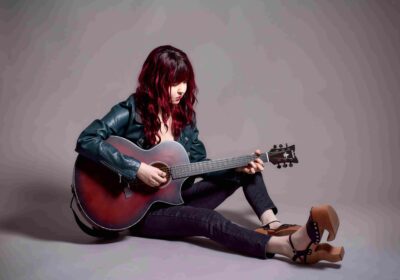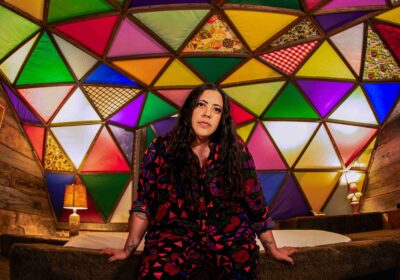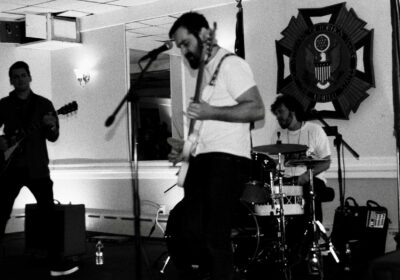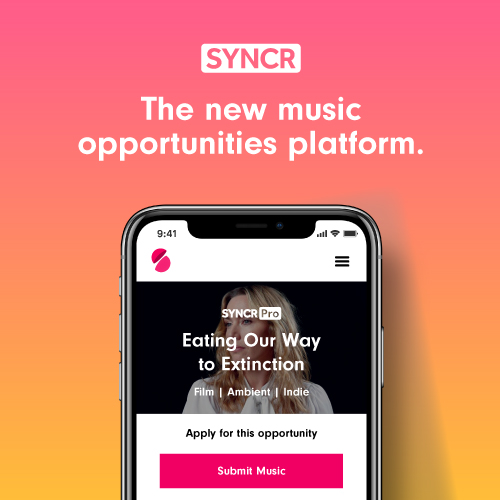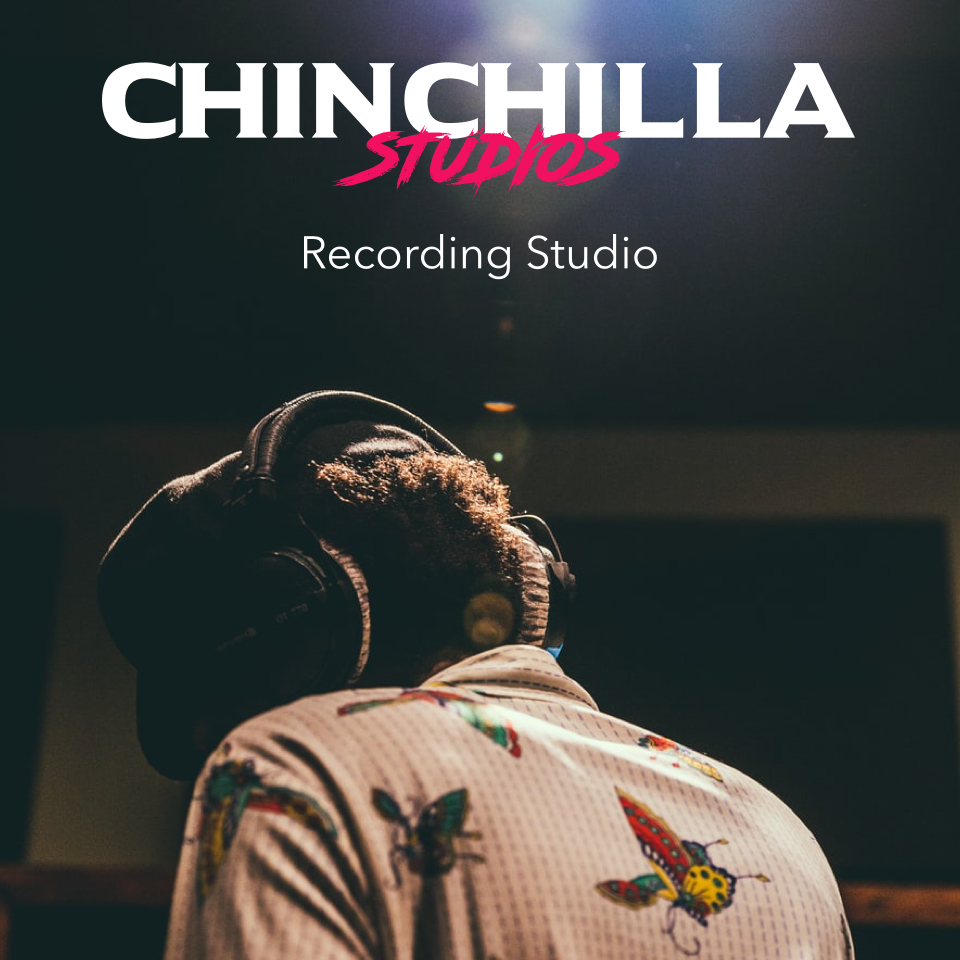We had a chat with Brooklyn alternative duo The Love Ways about their seismic new single ‘I’ll See You When’
The word that comes to mind when thinking about ‘I’ll See You When’, the latest single from The Love Ways is monumental. The track has such a larger than life, grandiose nature, such a huge sense of spectacle and occasion that just seems to keep swelling and growing as the track progresses.
The track feels like something of a last stand, growing in intensity and building this desperate kind of atmosphere as it bounds towards its cathartic conclusion. The track explores themes like self-discovery, introspection and reflection as they the duo take their sound to darkened, heavier corners than they have ever pushed it to before, making for an ambitious, adventurous new release that is packed full of enthralling, powerful charm. There is a lot to unpack within the track and its video, so we had a chat with Mark and James to find out a little bit more about ‘I’ll See You When’ and some of the inspiration behind its more epic feeling sound.
Hey! We love your new single ‘I’ll See You When’, what more can you tell us about it?
MARK SHREVE (MUSIC + INSTRUMENTS) – Hey guys – wonderful to chat with you again! And thank you for the kind words, it’s so great to hear that you like “I’ll See You When”. We like it a lot too so plenty more to tell you about it (laughs). I know a bit later we’ll get into the process, influences etc. so I’m thinking now of some non-standard things to clue you in on. Thematically it’s pretty grandiose – full of big swings, big moments, big ideas and big ambitions and (especially) big emotions. When I was writing the music I tried to think about what brings up big emotions for me. And on top of that, so that it lands with listeners as well, what are some big, shared emotional moments? The things where people say “oh I always cry there / that always gets me so fired up”. I find a lot of that in movies so that’s where I went to mine some emotion for ISYW. Anyways hear me out on this. The back-half of ISYW is this giant build; it keeps swelling and building and coming back and keeps on clawing – as I was writing it I knew I wanted it to feel cinematic and it really clicked for me when I realized that very little gets me as emotional as the end of the first Lord of The Rings movie. So not even joking – the back half of ISYW is supposed to sound like Boromir’s last stand. It’s Sean Bean getting annihilated by arrow after arrow and continuing to get up and fight for his friends and find redemption despite not being able to win. Even just talking about it now – it’s so heroic, it’s so fucking great. But then just as you think it’s over for him; that he’s going to have this ugly death, Aragorn blasts into the frame and what follows isn’t pretty or heroic in the least – it’s this ugly, bloody and brutal street fight. I wanted to convey that through the music – so the end of the build is the heaviest, nastiest thing The Love Ways have ever done. That’s Aragorn getting the shit kicked out of him and fighting for his life and then fucking decapitating the baddest dawg of the Uruk-Hai (Lurtz). I wanted you to feel like Viggo at the end of that part. And then with that done, Viggo – covered in blood and sweat and completely exhausted, gives his friend some compassion, redemption and resolution. That’s that last, sweeter-sounding guitar riff playing out until the end. It was brutal and ugly to get there but light wins over dark. Anyways there you have it – if you like The Fellowship of the Ring hopefully you’ll like “I’ll See You When” too (laughs).
JAMES LANGLOIS (LYRICS + VOCALS) – Def Fellowship adjacent. Mark’s correct about that. Lyrically amongst the bombast and the grandiosity we’re trying to evoke a look backward at the conversations that you’ve had and the conversations you’d wish you had. As you get further and further from particular inflection points in your life, you may see the color change in the frame of memory or you may just cement a particular moment, never to change or grow. When you look back at those moments, what do you wish you’d done differently or would you not change a thing? The chorus then exhorts you, after all your rumination, to perhaps let jettison that which cannot change and look forward to a future of difference and progression. Throw the ring into Mt. Doom. Just let it go.
What was the process like putting it together?
MARK SHREVE – James & I are in more or less constant text communication so we’re always chatting about what inspires us, what gets us excited, what we’d like to emulate, what we haven’t yet accomplished, etc. Generally we’ll have specific songs in mind (might be different songs for each of us but we’re aiming for the same kind of emotional/thematic north star) and then I’ll start working on the music, sharing what I’ve got with him and he’ll dig in on the lyrics. For putting together “I’ll See You When” I’d say there was a very big aspect of this being recorded at the same time as our last single, “Desire Lines”. As far back as in the writing & pre-production phases for both songs we knew we were going to lead with DLs. We knew DLs was going to be our take on something early Killers-ish, that we wanted it to be very easy to like, and that we wanted it to sound like you’d lived with it for years right off the bat. Everything in it was supposed to just work. So with ISYW, the goal was kind of the opposite. I wanted to do something that was structurally weird, way less easy to grasp. It’s supposed to be labirynthine, mysterious and claustrophobic, like a maze closing in on you. It’s a dark song with a dark sound. I had to work hard to write different parts, swap them around, find ways that they fit but were still in a non-standard structure. As far as the instruments go, I knew 98% of what I was going to play on each track before we showed up and had thoroughly (exhaustively) demo’d it out. To get it sounding so monumental, we worked with Rob Freeman at Audio Pilot studios and he’s the reason it all really fits together into a cohesive whole. As far as understanding our goals, how the different kind of intentionally disparate parts fit together – he facilitated it arriving in as good of a state as it is. Anyways recording with Rob is such a treat; he’s a musician I really looked up to growing up and getting his guidance and input on our work really brings it to where it needs to be. I’d add that I had no idea what the lyrics were until James got in the vocal booth but my god did he nail it. So anyways – ISYW was recorded at the same time as DLs and thinking back it was a gorgeous 4 days at Rob’s studio. I remember like day 1 would be me doing all the drums and rhythm guitars and being just exhausted and destroyed and I look out the window and James is like pensively strolling the field with some deer around him and a Cormac McCarthy in his hand (laughs) then he comes in and lays down “Not a winter bloom, summer’s not pretty either” and just floors me.
JAMES LANGLOIS – The process is great for me because I get to be bathed in this song progressing around me. I’m useless in a technical sense so it’s nice to wander in and out of the studio as the architecture of the song becomes the noise floor to my writing, morphing and changing certain lines and phrases and evoking entirely new ones. Ain’t a bad way to live.
What were your biggest influences when creating the track?
MARK SHREVE – To kind of build on my answer above – thematically I think James & I drew here on books and films to eke harvest moods, emotions, moments, etc. As far as the sounds and how we discussed where this would lie in our body of work – when James and I were talking about what we wanted to accomplish here a common thread was always “Tonight, Tonight” by the Smashing Pumpkins. We wanted that kind of soaring sound of a rock band going for something big and special, guitars and drums that play more like an orchestra at times than a band. That really influenced the treatment for the interplay between more subudued, pensive verses and then crushing choruses in the song. TT also majorly influenced the build, the the addition of some strings, the swells and highs and lows and tension & release of the song. Then for me personally, I kind of stayed in that later-90s period. I think you’ll hear a lot of “Everlong” by Foo Fighters and hopefully some “Change in the house of Flies” by Deftones in there. Those three are definitely the thematic foundation for it. The confidence to do some weirder things here is due in no small part to my love of Biffy Clyro. There was an aspect to this as well from when we were writing the songs of me and James re-introducing The Love Ways to the world as a two-piece. There’s a lot in ISYW that are ideas I really wanted to do and things I wanted to try when we were a five-piece that never made it to our audience so I’d say I was also influenced by our older stuff and making a pretty big statement about where we are now and what we can do with our newer stuff.
JAMES LANGLOIS – Tonight, Tonight will always be such a touchstone for me. Just the ultimate cinematic, over the top rock song that widened my eyes as a kid. It felt appropriate to match that feeling once I started hearing the demos and letting them wash over me or at least knock me back a bit.
What was the thought process behind the track’s ambitious music video?
MARK SHREVE – (Laughing) so you know again a lot of the decisions were based on like “okay how do we do this very differently to ‘Desire Lines’”. I love that music video. And it was easy to point to some of the starker stylistic choices there – it’s in black & white, it’s in a 1:1 aspect ratio, there’s one camera angle, it’s strictly performance, it’s all indoors – and ask how we could make very different decisions this time around. We knew going into the planning process for “I’ll See You When” that the goal was to do everything bigger: widescreen aspect ratio, in color this time, we were going to act in it, it was going to have narrative, multiple angles, multiple cameras, the cameras would move (laughs), it’ll be in nature…we were going to try and make something pretty ambitious. A major guiding principal was that it had to look and feel much better than what anyone was expecting. So there’s that, and then there’s that when James & I aren’t talking about music, we’re probably talking about movies. The thought process then became kind of “okay what’s doable? What’s in budget? What do we already know how to do and what do we need to learn how to do?” What do we think we’re capable of?”. One major influence on the look of the video (how we chose locations, among other things) is the first season of True Detective – that led us to seek out some…unwelcoming looking locations for this. We chose to film kinda illegally at this abandoned civil war fort on the outskirts of NYC – Fort Tilden. It wasn’t all illegal but we had to hop some fences, crawl into and out of a few places, watch for a few cops here and there (laughs). From there – the idea was for the video to create a pretty ominous, threatening mood and to have visuals that suggest but don’t quite fully tell a story. Like the song itself, we wanted the video to be very realized: very finished but not recessarily giving strict answers. To get that, we chose the locations and then looked to what was in-budget (fake blood’s cheap on amazon), what would look visually exciting and compelling (bats with nails in them, big red axes), and got out and started making it. I think for me personally, I wanted to do something I knew would be difficult and I knew that if we put a ton of thought and care into it that our audience would as well. I love music videos as a medium so at all points the thought was to make this thing way, way better than anyone would expect.
JAMES LANGLOIS – For me, our video projects come from imagery. We’re not really focused on narrative as much as we’d like to be sometimes, so just conjuring imagery is such a good starting place. Also, as no-budget filmmakers, we steal 99% of our shots, so coming up with good looking locations is always a fun challenge. Having a working knowledge of the backroads and bywaters of the tri-state area is a big ole plus.
What else do you have planned for the near future?
MARK SHREVE – (laughing) Big things coming soon, man. James and I went back to Rob’s studio a few weeks ago and recorded two more songs that we’re finishing up mixing right now. At this point we hope you can always expect that we’ll push a bit on what you think our sound is – with these two new ones I can tell you for sure it’ll sound like us but not quite like you’ve heard us sound before. We’re also pretty all-in on making videos at this point so you can expect another round of us being behind of and in front of the camera trying to do something fun, exciting and creative for each. Obviously don’t want to give too much away – you’ll hear them when they’re ready (which hopefully won’t be too long…we’re real excited to get them out). But happy to share that the north star for one of them was to celebrate the energy, emotion and greatness of that first Yeah Yeah Yeahs record. Guys it’s so fucking good. The other one is going to be The Love Ways having maybe the most fun you’ve ever heard us have and throwing down harder than you’ve ever heard us throw down before. I’m actually listening to the early mix right now. James is going to melt your fucking face. I wrote a Grohl-era QOTSA song and he sang an Idles song over it. It fucking rips.
JAMES LANGLOIS – What Mark said. It’s gonna be real fun.


